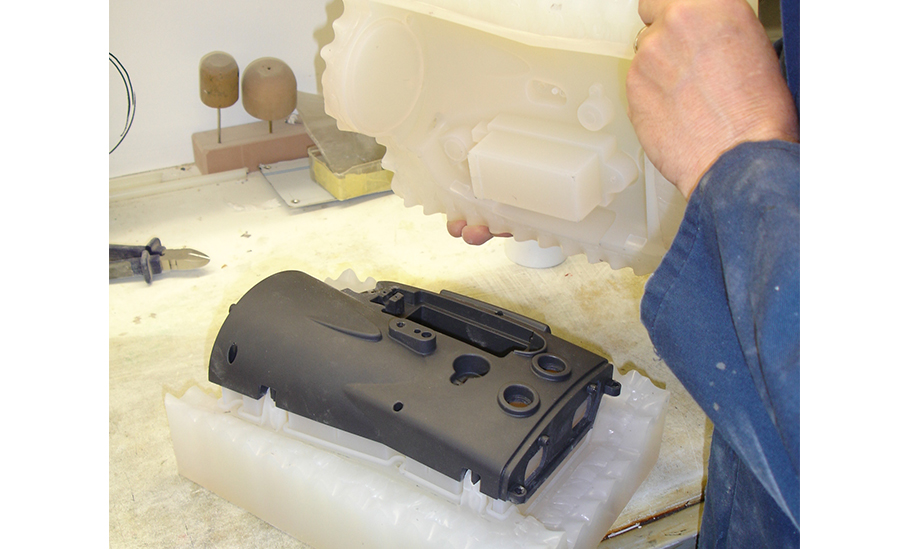VACUUM CASTING
There are multiple stages in the prototyping lifecycle. And one such process is Vacuum Casting. It is a bridge between a 3D Printed prototype and the Injection Molded product. It helps people visualize the product in material equivalents similar to injection moulding, which is not available in 3D Printing. It is a fast and efficient technology used to create a short batch of 20-25 pieces.

Why choose Crennovations for Vacuum Casting Services?
Vacuum Casting is a process where a master made in Stereolithography (SLA) and is placed in an enclosed box. Liquid silicone is poured on top of this masterpiece. Once the liquid silicone is cured, the mould is carefully cut from the centre to create two halves. Once done, the master is removed, and a gate point is added for material entry. This leaves us with a silicone mould capable of creating a short batch of a few pieces of the master by pouring a material of our choice.
We use a highly accurate industrial grade SLA machine to produce the master. Once printed, it is analyzed to locate any dimensional deviation. Post that, it undergoes a sanding process to eliminate any lines which arise due to the 3D Printing process.
With efficient timelines and competitive pricing, Crennovations is one of the best providers of vacuum casting services in India.
Advantages of Vacuum Casting
- Ideal for short batch manufacturing
- Multiple Material equivalent options
- It be used for testing and consumer surveys without an injection mold
Materials used in Vacuum Casting
The Vacuum Casting Process involves the use of materials like Acrylonitrile Butadiene Styrene (ABS), polypropylene (PP), glass-filled nylon, nylon, polycarbonate (PC), etc.
Frequently Asked Question
The Vacuum Casting machine uses a vacuum to get the liquid resin ( like ABS/PP, etc.) into a silicone mould. Then the resin part Is cured in a heating chamber. Further on, flashes and extra material is removed to create the final piece.
Vacuum casting is a rapid and effective method to create top-quality prototypes in materials that are equivalents of injection moulded components.
Any part which is within the build volume of 1 mtr x 1 mtr x 1 mtr with a specific thickness can be manufactured.